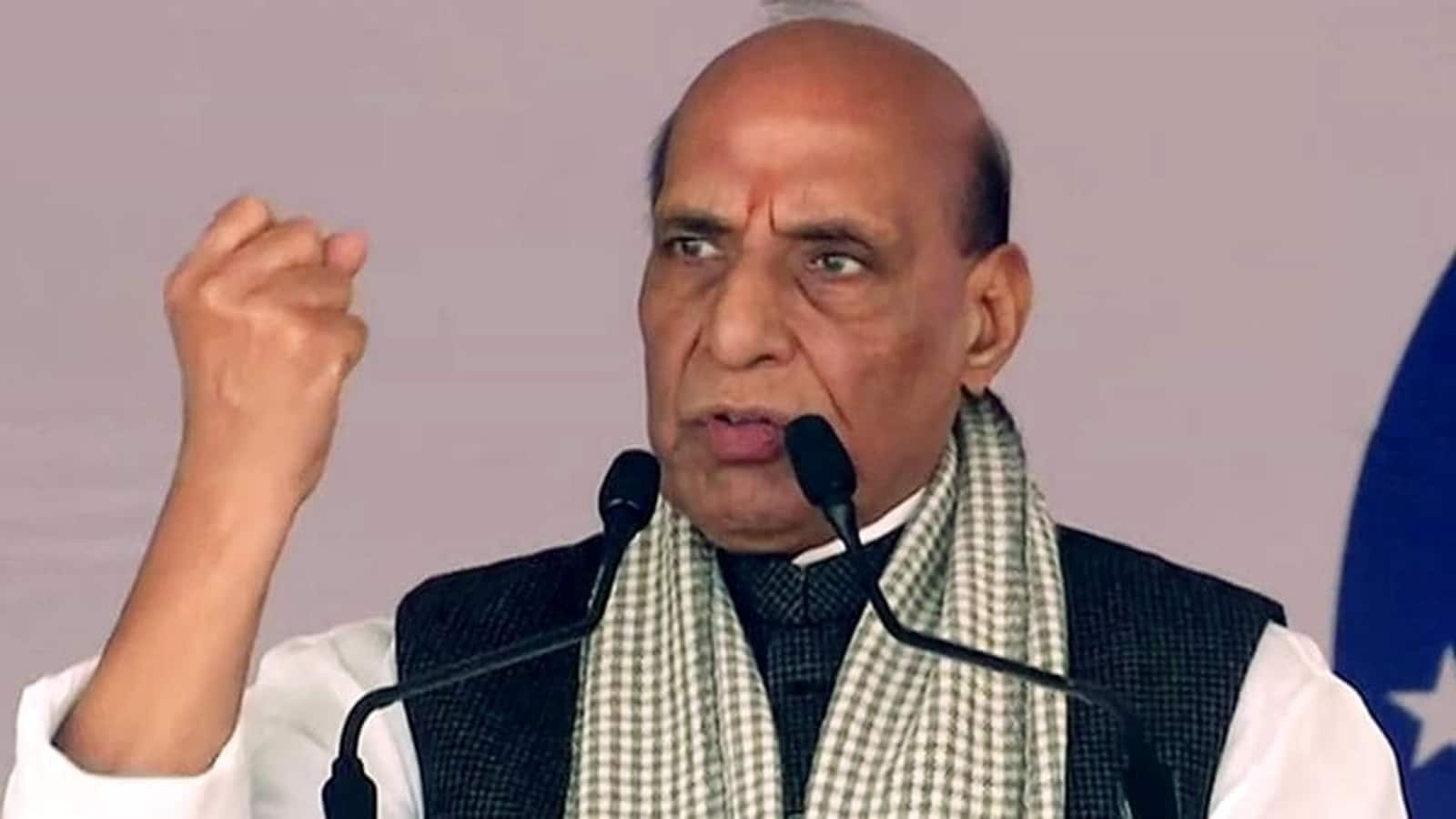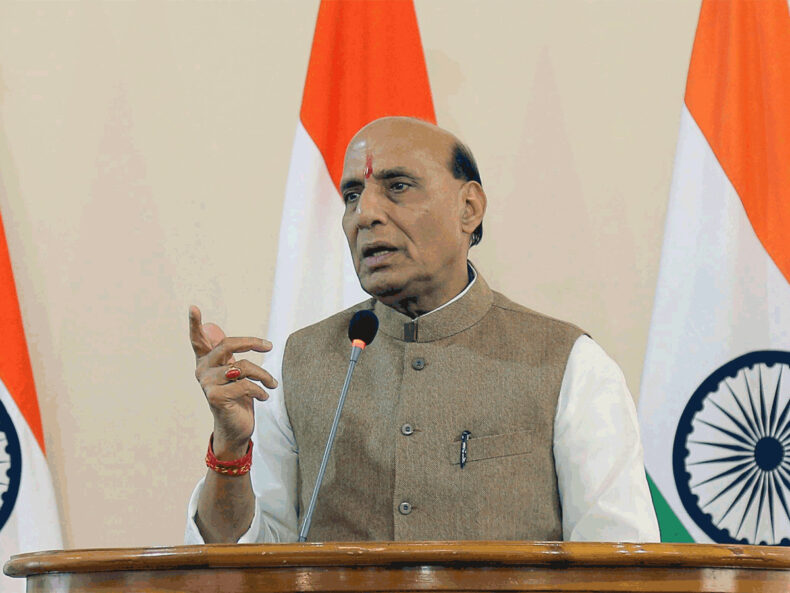Defence Minister Rajnath Singh described the 1975 emergency, which was imposed 47 years ago, as a “sad dark chapter” in the country’s history.
He took to Twitter to express his feelings about the emergency. He wrote that the 1975 national emergence was a dark chapter in our history that must not be forgotten. See here.
He said, “We should dedicate ourselves to upholding our democracy.” He continued by saying that we should pledge to uphold the dignity of India’s constitution and governing institutions.
On this day in 1975, Independent India experienced its darkest hour when then-Prime Minister Indira Gandhi had called for a state of emergency in India for 21 months.
The Emergency, officially announced by President Fakhruddin Ali Ahmed under Article 352 of the Constitution in response to the prevailing “internal disturbance,” lasted from June 25, 1975, until March 21, 1977.

National Emergency of 1975
The emergency was declared by President F. A. Ahmed on the recommendation of the Indira Gandhi government in 1975 and lasted for 21 months. The declaration was justified by a threat to national security and poor economic conditions.
Famous historian Coomi Kapoor has also described it as a “dark chapter,” noting that “the number of those in Indira Gandhi’s prisons during the Emergency far exceeded the total number jailed during the 1942 Quit India.”
It was declared unexpectedly at midnight on June 25th, and the country awoke to the death of democracy.
India declared a national emergency for the third time; the first two were during wars with China and Pakistan in 1962 and 1971, respectively.
Indira Gandhi won the general election with a massive majority in 1971. She had gained popular support through pro-poor and lucrative policies such as bank nationalization and the abolition of the Privy Purse.
Gandhi exercised near-autocratic control over the cabinet. She had complete authority over the government. The country’s GDP had been reduced as a result of the 1971 war. It experienced numerous droughts and an oil crisis. Unemployment had also multiplied.
The government ruthlessly repressed a railway workers’ strike led by George Fernandes in 1974.

Janata Party leader Jayaprakash Narayan (JP) has called for the government to be ousted from power. He advocated for a program known as Sampoorna Kranti (total revolution). He further requested the members of the police and military to defy unconstitutional orders.
The government also intended to meddle in judicial proceedings.
on 24 January 1975, in the State Of U.P vs Raj Narain, the Allahabad High Court ruled that Gandhi’s election to the Lok Sabha was null and void due to electoral malfeasance.
Justice Jagmohan Lal Sinha delivered the judgment. Gandhi filed an appeal with the Supreme Court in response to the verdict.
To address all of these issues, the government declared a state of emergency on the grounds of internal rebellion. Indira Gandhi granted herself extraordinary powers by invoking Article 352 of the Indian Constitution, launching a massive crackdown on civil liberties and political opposition. The government misused the preventive detention provision by arresting opposition party political workers.
All prominent opposition leaders were arrested, including JP, Morarji Desai, Charan Singh, Acharya Kripalani, and others. The members of Congress who were opposed to the emergency were also arrested.
Even royalty was not immune. Rajmata Vijayaraje Scindia and Maharani Gayatri Devi were detained as well.
The government took away the freedom of the press via “press censorship”. It was required to obtain the approval of the government before publishing anything.
Civil liberties were severely restricted during the emergency.
The fundamental right of constitutional remedies to move the court to restore their FRs was suspended.
The Janata Party emerged victorious in the election. Morarji Desai became the first non-Congress Prime Minister of India.
Emergency Provisions enshrined in the Constitution of India
The provisions for an emergency are enshrined in the Part XVIII of the Indian Constitution, from Article 352 to 360. See here.
The raison d’etre of the incorporation of these provisions is to protect the unity, sovereignty, security, and integrity of the country, the democratic political system, and the Constitution.
The Constitution defines three kinds of emergencies:
- National Emergency
- Constitutional Emergency
- Financial Emergency
The national emergency of 1975 was declared by invoking Article 352 of the Indian Constitution.

According to Article 352 of the Indian Constitution, if the President of India believes that India’s security is threatened by outside aggression or armed rebellion, the President may issue a proclamation affecting the entire country or a portion of it.
The proclamation must be approved by both houses of parliament (Rajya Sabha and Lok Sabha) within one month. The president may later revoke the declaration of emergency.
In Minerva Mills Ltd v. Union of India, the Honorable Court held that there is no bar or limitation to judicial review of the validity of a presidential proclamation of emergency issued under Article 352. (1). See here.
The proclamation of emergency made under Article 352 is subject to judicial review and can be challenged in court on the grounds of malafide.
Key Takeaways
The 1975 Emergency is regarded as one of the most contentious periods in independent India’s history.
The Emergency is a cautionary tale for today’s journalists.
It also reminded people of the government’s absolute power during a national emergency. The subsequent defeat of Congress demonstrated that citizens are the ultimate arbiters of India’s democratic fate.
The Emergency taught us that when a government in a democracy becomes autocratic, people find solutions on their own.
In the end, in democracy, power lies with the people.













